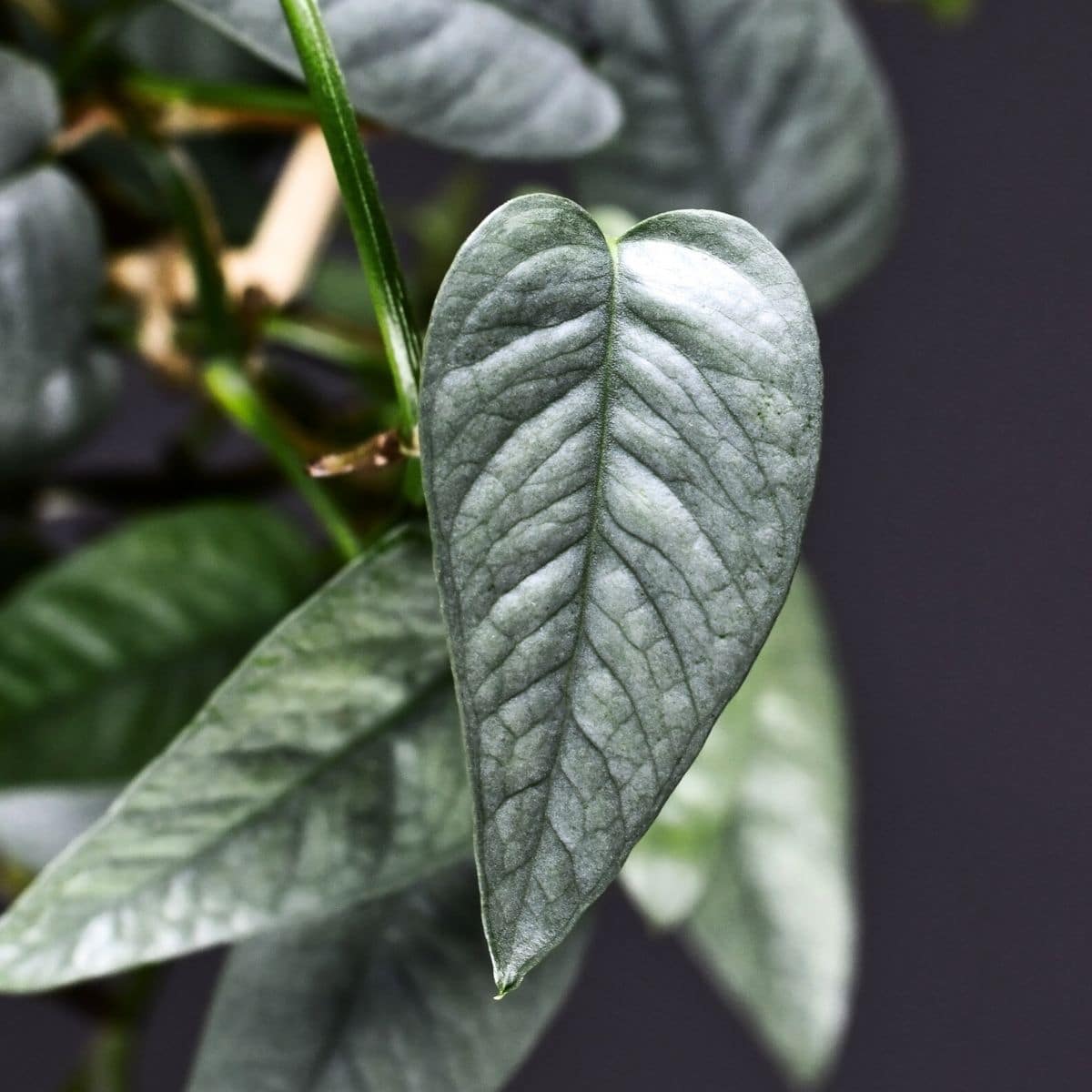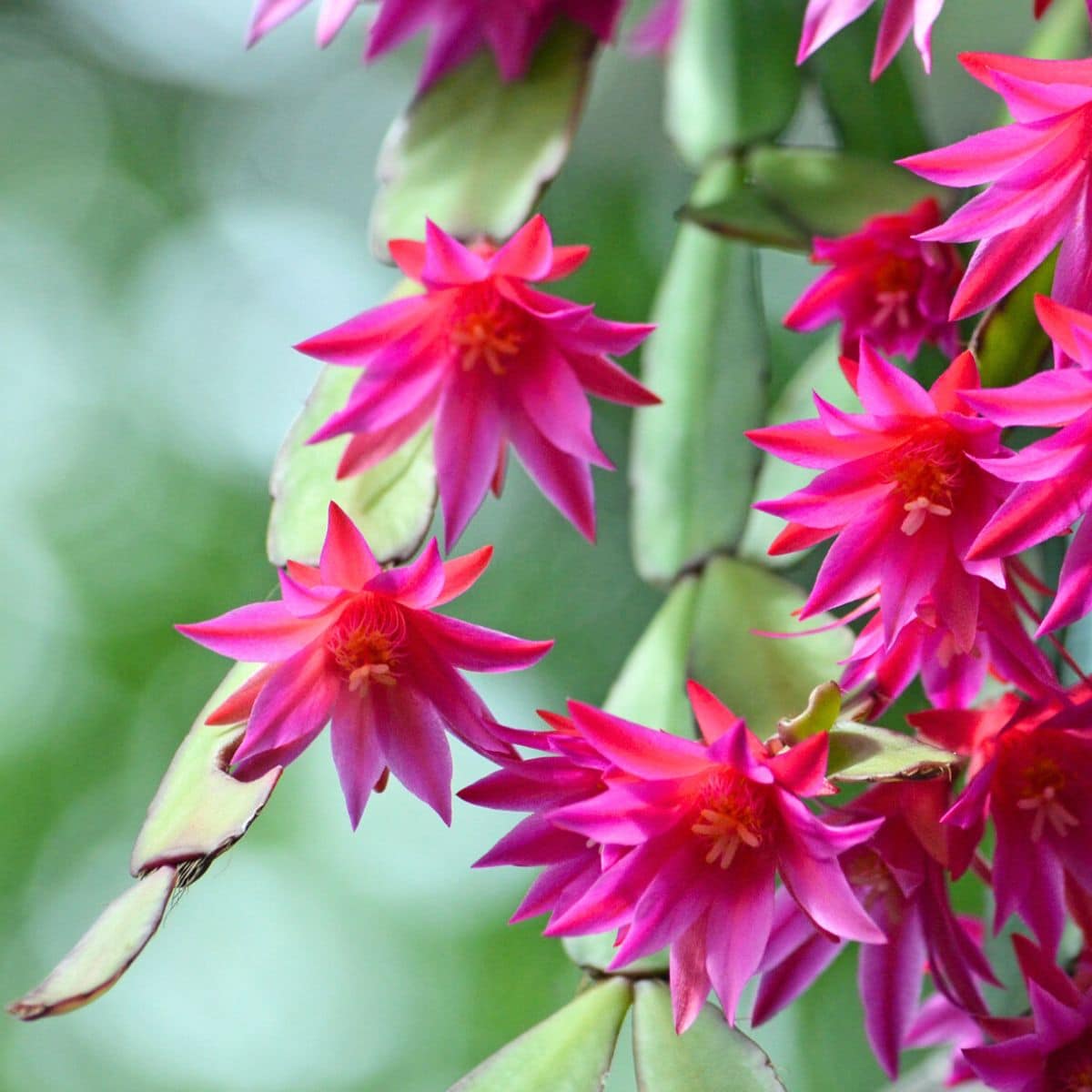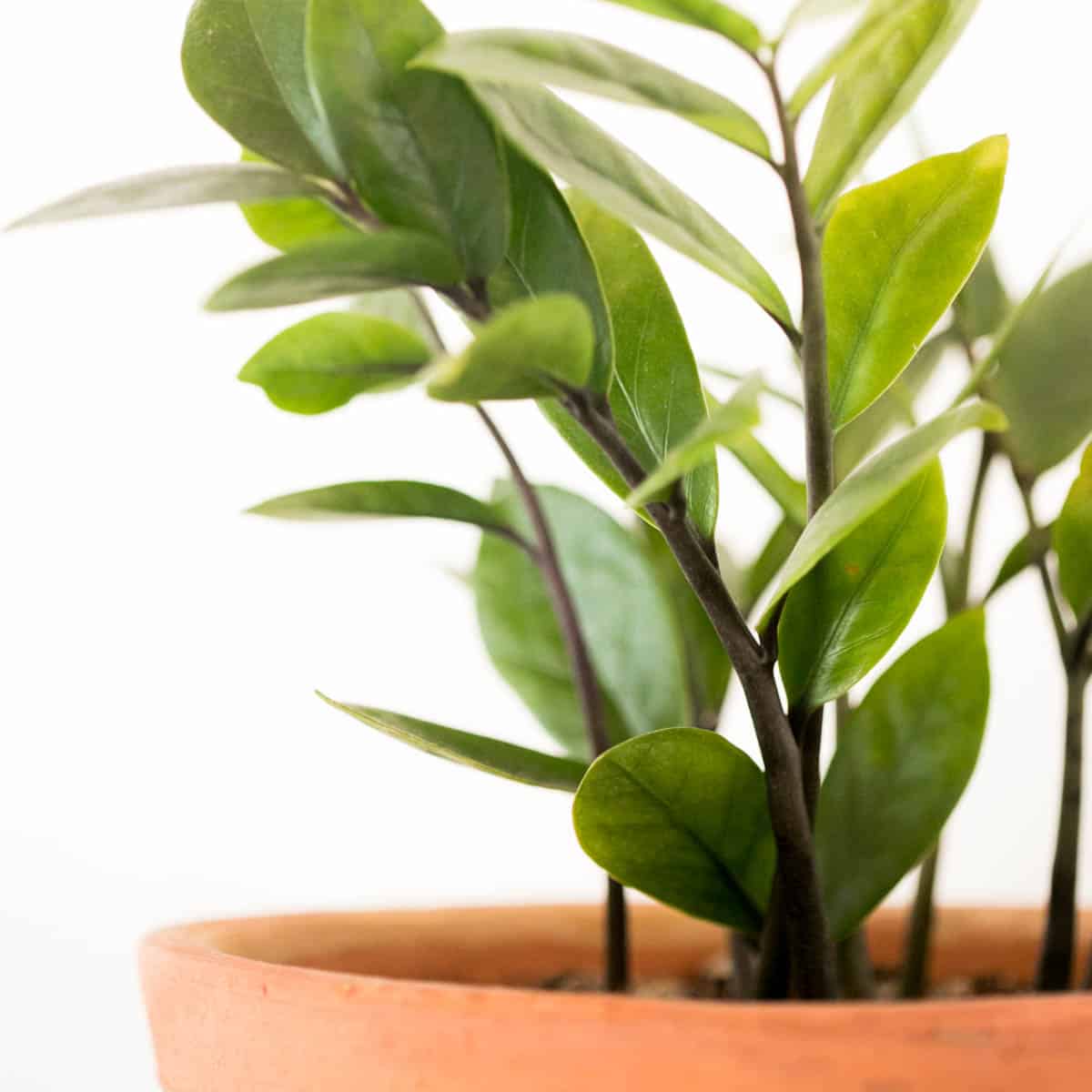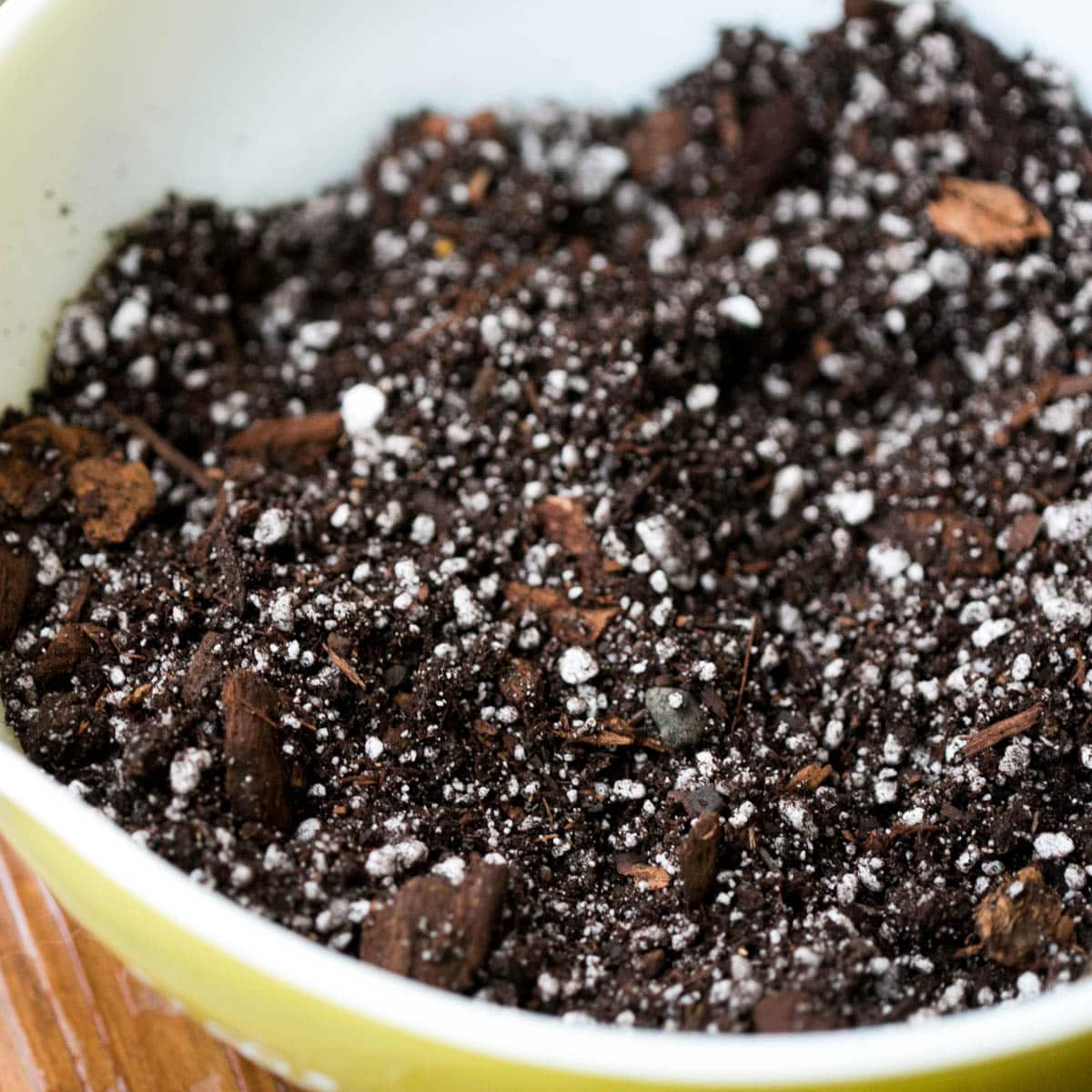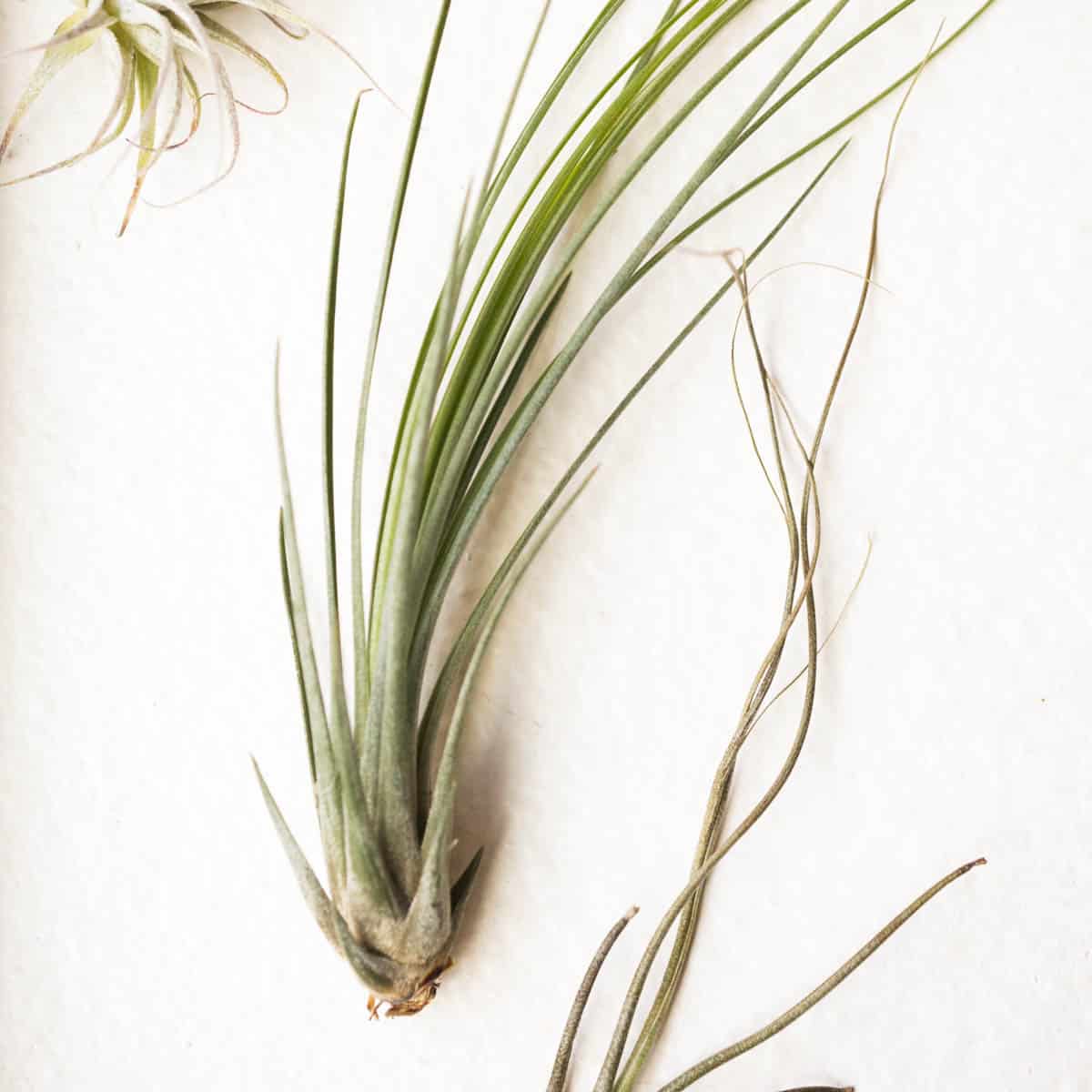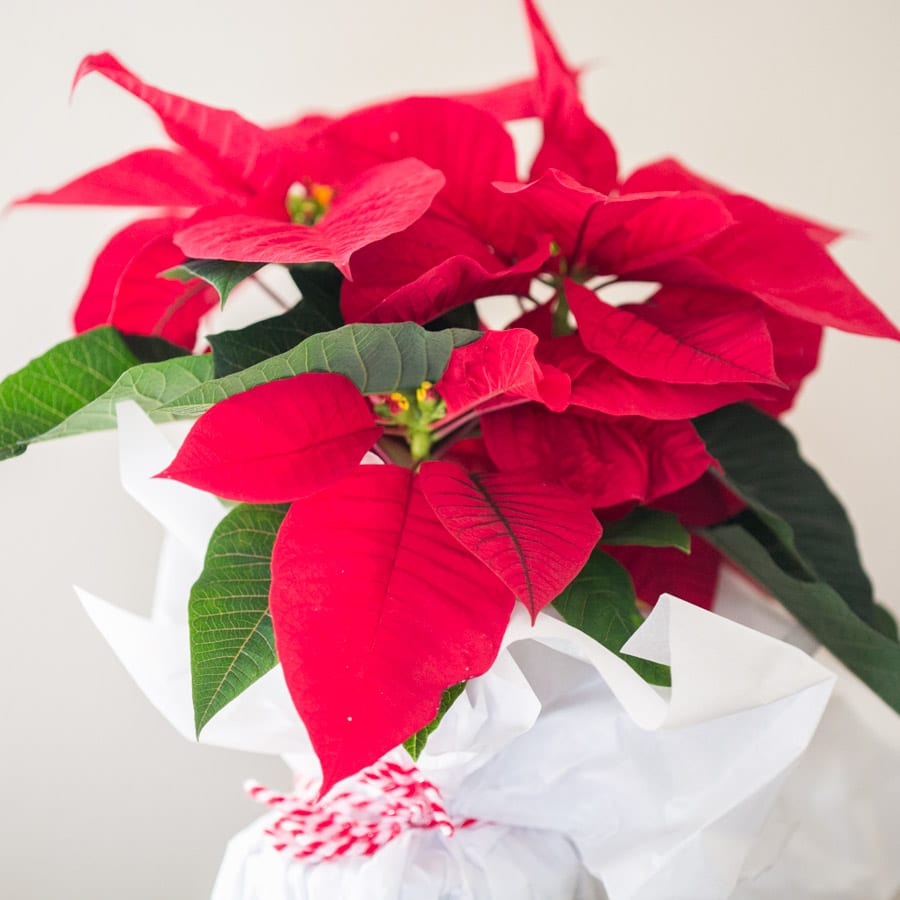How To Get Air Plants To Bloom (Flower Care Guide!)
This is the ultimate guide on how to get your air plants to bloom!
Air plants are exotic indoor plants that don’t require any soil. They thrive in bright indirect light and are common to humid jungle areas in South America.
Air plant flower blooms unfurl in beautiful colors from the mother plant.

These beautiful flowers are vibrant, colorful, and…rare!
You may be wondering if your air plant will bloom and how to get it to bloom. We are sharing all about the air plant blooming process today. We’ll learn about the air plant life cycle and the best way to give your air plant care so it will be more likely to bloom!
The good news: if you give your air plant the TLC it needs, it will eventually bloom!
How To Get Air Plants To Bloom (The Short Answer)
In order to get air plants to bloom give them them good care!
Air plants are low maintenance plants that come from tropical climates. Though they are easy to care for, producing a air plant bloom takes a lot of energy. Air plants need plenty of bright natural light, regular watering and maybe a little liquid fertilizer in order to bloom.
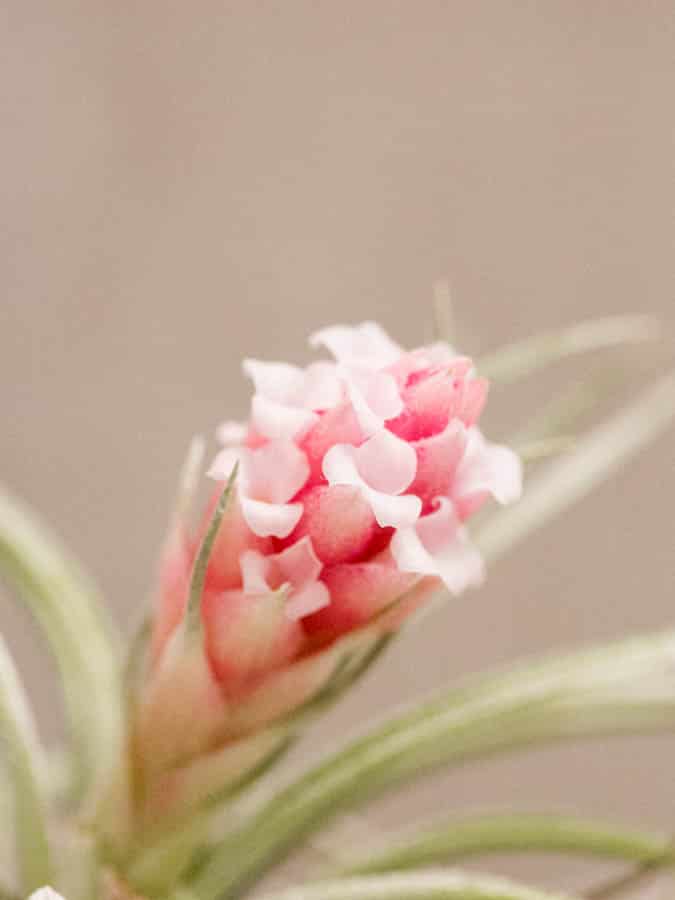
They will also need enough humidity and warmth in order to thrive and produce flowers. If you meet these air plant needs you will be rewarded with a beautiful single flower!
Read on to learn more about the easy special care you can give your air plants to help them bloom.
(If your air plants are dying, read this article for help!).
How Often Do Air Plants Bloom?
Air plants bloom just one time during their life cycle. After the bloom they produce air plant pups, or babies, at the base of the plant.
They have a slow growth rate and usually bloom in the spring or summer months. The plant may experience color changes in the end of its leaves right before blooming.
Depending on the specific flower and growing environment, the blooming period can last for up to two weeks!
Learn how to grow baby spider plants in water here!
Native Habitat For Air Plants + How It Affects Blooming
Air plants are tropical plants that are native to warm, humid environments. They are commonly found in the Southern United States, Central America, and parts of South America.
Their natural habitat is usually a humid, warm jungle, though xeric air plants can also be found in dry desert climates.
These growing environments feature high humidity, warm temperatures, good air circulation and diffused bright light.

When growing air plants it’s important to create an environment that mimics their natural habitat. This will encourage the air plant to bloom.
Air plants do not need soil in order to thrive. They collect nutrients from air and water and can live on anything from a large seashell to a piece of bark to a bookcase!
Air plants make up the Tillandsia genus which are part of the Bromeliad family. There are over 650 types of air plants. These perennial plants feature green leaves and a root system that collects nutrients just from air and dust! There are many species of air plants, offering a diverse collection of beautiful flower blooms.
Some common Tillandsia species are Spanish Moss (this plant hangs down from trees in places like Georgia), Tillandsia xerographica, and Tillandsia iontha Mexican.
There are many varieties of air plants that you can grow in your home, and they boast unique beautiful blooms of different colors and shapes! The blooms typically burst forth from the center of the plant.
Air Plant Life Cycle
Air plants only bloom once in their life. This beautiful bloom is the start of the air plant reproduction cycle.
Once they are done blooming, the plant will produce new growth in the form of baby air plants. You will see these new plants at the base of the air plant.
All different types of Tillandsia produce blooms. Air plant flowers come in an array of styles and colors that range from bright red to light pink, bold oranges and purple flowers.

The beginning of the plant life cycle starts with a baby air plant at the base of a mother plant.
These slow-growing plants will eventually grow to create their own flowers. The flowers can be either self pollinating or need another plant for cross pollination.
The flowers are sometimes referred to as a bloom spike as they shoot out from the center of the plant. As shown above, the blooms unfurl on a long branch. This style of flowering is called inflorescence.
The flowers are responsible for sexual reproduction. They attract pollinators such as bees, bats and butterflies, and these living things carry pollen from one plant to another.
After an air plant blooms it begins to grow baby air plants at it’s base. Air plants begin to die after flowering. The air plant lifespan will repeat itself through the pups!

What’s the difference between an air plant and succulent? Find out here!
How To Take Care of Air Plants To Encourage Blooming
Air plants need to be given the right conditions in their environment in order to bloom. The amount of light, humidity, and water they receive is important!
All of these factors play a role in keeping an air plant healthy so it can bloom.
Different varieties of Tillandsia plants require different care, so be sure to pay close attention to your air plant variety.
Light
Light for air plants can be a little tricky: some varieties enjoy bright indirect sunlight and some like bright direct sunlight.
Mesic air plants tend to do best when they are given bright indirect light. These air plants typically live in jungle like environments. They get indirect light that filters through plants high above them.
Xeric air plants can tolerate direct sunlight. These plants can sometimes be found living on sand rocks, exposed to the light. Some of them even need direct sunlight in order to thrive.
While many air plants enjoy bright, indirect light, make sure to research your air plant type to give them the right light conditions.
Read this article for further info on air plants and light.
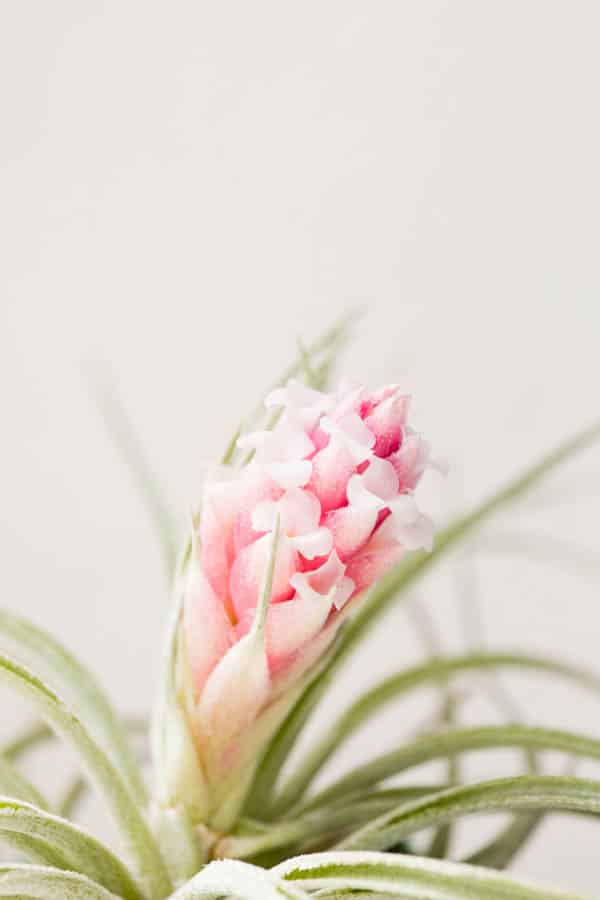
Humidity
Air plants need a high humidity environment in order to thrive. Humidity refers to the amount of moisture in the air.
In drier climates, you will need to take extra steps to ensure your air plant has enough humidity. If you live in a naturally humid area with lots of moisture your air plants will thrive.
To add humidity to the environment put distilled water into a humidifier and use daily. Or place your air plant in a home with a naturally humid environment, such as a bathroom.
Temperature
Air plants come from a climate with warm temperatures. The ideal temperature range for air plants is 60-90 degrees. Avoid placing air plants in cooler temperatures or areas in the home that have cold drafts.
Remember that air plants come from tropical climates and enjoy warm weather, and adjust your growing space accordingly.

Water
To water air plants, soak them in water for 10-20 minutes. Tap water is filled with chlorine and fluoride, so use rain water, filtered water, or fish tank water. Learn more about the best water sources for plants here.
Always let rain water warm up to room temperature.
Like humidity levels, how often you water your air plant will largely depend on your environment. In dry environments you may need to water your air plant every couple of days.
And in more humid environments your air plant can probably go a week to ten days without water.
How much water should you give your air plant? That depends on the humidity level and sunlight your air plant is receiving. Less humidity and more sunlight means you need to water the air plant more! And with more humidity and less sunlight you can water less.
To water a blooming air plant soak only the plant and not the flower. Soaking or misting the flower can shorten the lifespan of the bloom.
Never leave your air plant in standing water or water on its leaves for a long time. Set it upside down on a paper to dry for several hours after watering.
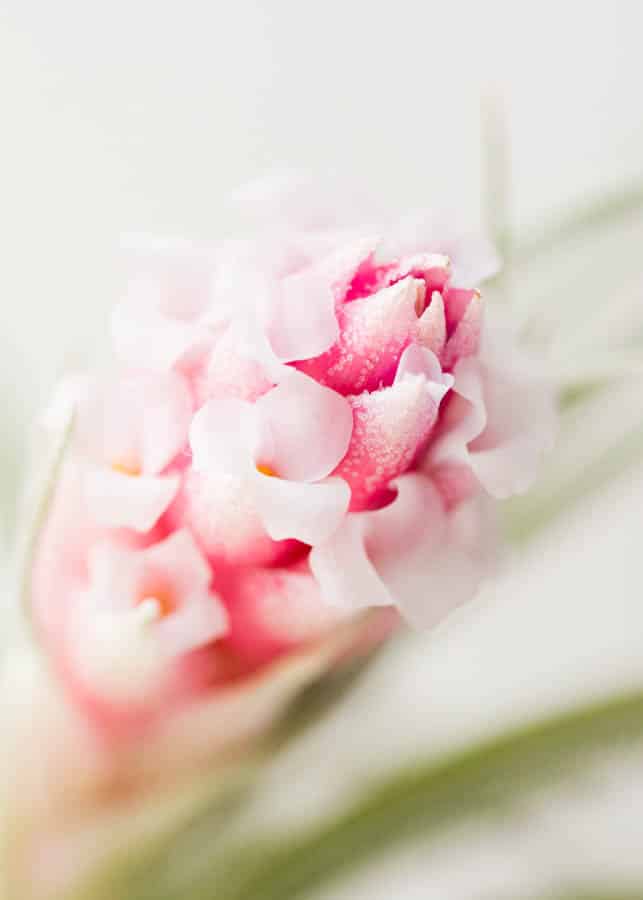
A word of caution: If you live in a dry climate, do not neglect watering! Air plants in dry environments need a good soak every few days or they may die. Water more during dry or hot months. We speak from experience!
Air Plant Fertilizer
While air plant fertilizer isn’t a necessity, it can boost the plant’s overall health and encourage it to bloom.
Use an air plant specific fertilizer and fertilize your plant about once a month. These specific air plant fertilizers will meet the needs of your air plants without over fertilizing.
Air plants are slow growers and fertilizers may help to speed up the growth.
If you use discarded aquarium water to water your air plants you can skip the fertilizer!
Air Plant Experiments: Our Experience!
We have grown air plants on the Oregon coast, where it is damp and there is a lot of humidity in the air. In this location we watered our plants every 10-14 days.
We then moved to Southern Idaho, and in this dry environment we found we had to water our air plants more frequently, every 3-5 days.
The average humidity in Boise, Idaho is between 40 and 50. The average humidity in Hillsboro, Or is between 70 and 80! This is because of the rainy Oregon weather which saturates the air with humidity.
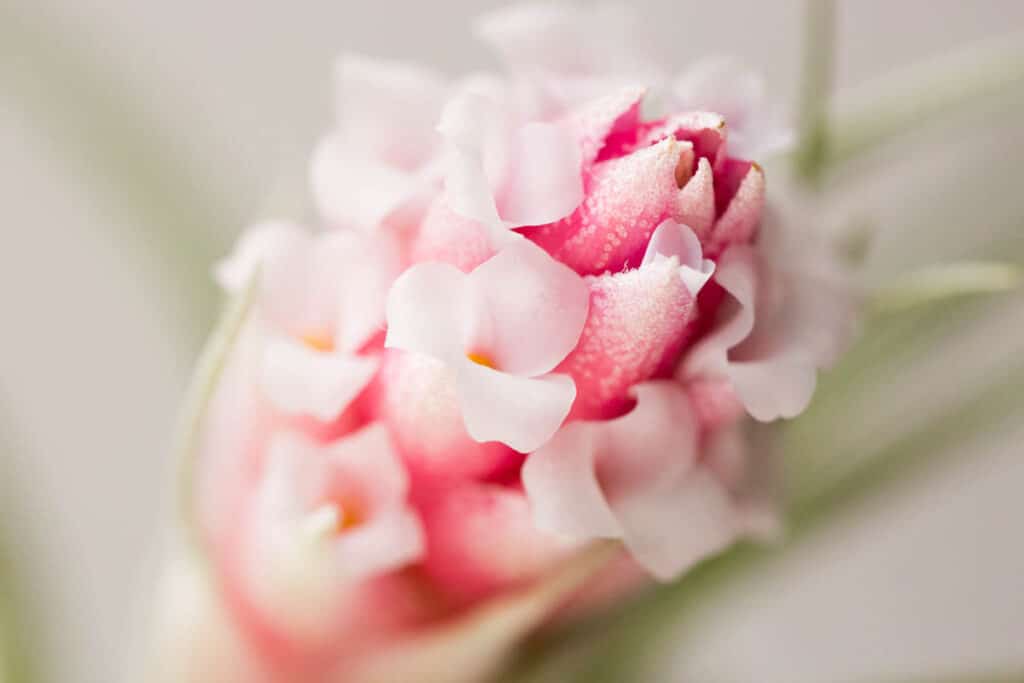
Air plant homes: Did you know? You can grow air plants in just about anything! Glass globes, book shelves, sea shells of all shapes and sizes, and hanging from the ceiling! Just make sure they stay dry.
How To Care For An Air Plant After It Blooms
Once an air plant blooms, you can celebrate because it’s time for it to produce new pups! Pups are the name give to the small new air plants that grow after the parent plant blooms.
Once the air plant is done blooming, you can cut the flower off at the bottom of the stalk. This will promote allow the energy of the plant to go into producing air plant pups.
Once the pups are established, gently remove them. A good rule of thumb is to wait until the air plant pup is 1/3 the size of the mother plant.
Where To Buy Air Plants
Air plants can be purchased at small local nurseries, big box stores, and even Amazon and from Etsy sellers. You can find and order air plants that are currently blooming on Etsy.
FAQS
Air plants are slow growing! It may take them several years to mature and produce a bloom. Each species is different, so research your specific variety to understand it’s air plant life cycle and when it will bloom.
As part of their life cycle, air plants bloom just once. After this they produce pups and slowly begin to die.
Air plants usually live for 2-8 years. There are many different varieties of air plants, and the life span varies with the species of plant and how it is cared for. Give your air plant lots of love and it will live a longer life. Proper watering, humidity and how much light given are all important to the health and lifespan of air plants
Final Thoughts
Air plant enthusiasts want to know: how to do you get an air plant to bloom? And will my air plant ever bloom?
The answers lie in the age of your air plant and the care it receives.
Be sure to give your air plant the right amount of water, sunlight and humidity to ensure it will bloom for you.
Happy growing! Jamie

